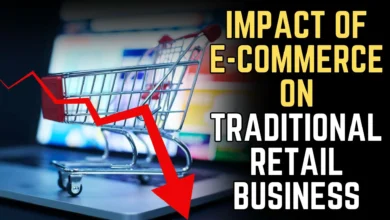GD Topics for Marketing with Answers
Top GD Topics for Marketing in 2024: Key Issues and Trends for Group Discussions
Marketing has always been an evolving field, driven by changing consumer behaviors, emerging technologies, and shifting business priorities. In 2024, group discussions (GD) in marketing will focus on the most critical and relevant trends shaping the industry. If you’re preparing for a marketing GD or simply want to keep your knowledge current, exploring these topics is essential. Let’s dive into the top marketing GD topics of 2024, complete with detailed insights, statistics, and a look at both the bright and dark sides of each issue.

1. The Role of AI in Marketing
Artificial Intelligence (AI) has revolutionized marketing, enabling businesses to deliver personalized experiences and automate processes. According to a Salesforce report, 51% of marketers are already using AI, with another 27% planning to adopt it by 2024. AI tools help marketers analyze vast amounts of data to predict consumer behavior, optimize ad targeting, and provide personalized product recommendations. However, as AI takes center stage, the human element of creativity and innovation in marketing might be compromised.
Pros and Cons of AI in Marketing
| Pros | Cons |
|---|---|
| Automates repetitive tasks | Potential loss of creative human input |
| Enhances personalized marketing | Privacy concerns with data usage |
| Improves customer experience | Expensive to implement and maintain |
| Provides valuable predictive insights | Dependence on machine-generated strategies |
As AI continues to develop, marketers need to balance efficiency with creativity and ethical considerations. The debate in a GD could focus on how much control AI should have in marketing decisions and whether it diminishes the human touch in branding.
2. Influencer Marketing: Trend or Fad?
Influencer marketing has exploded in popularity over the past few years, with businesses leveraging social media personalities to reach target audiences. In fact, a Statista study reveals that 67% of marketers increased their influencer marketing budget in 2023. With the industry expected to reach $21.1 billion by 2024, the discussion around whether influencer marketing is a passing trend or a sustainable strategy has gained traction.
Influencers have proven to be effective in boosting brand awareness and engagement, especially with younger audiences. However, the question remains whether their influence translates into long-term brand loyalty. Furthermore, concerns around authenticity and transparency persist, especially with the rise of “fake followers” and undisclosed paid partnerships.
Pros and Cons of Influencer Marketing
| Pros | Cons |
|---|---|
| Increases brand awareness | Risk of fake followers |
| Engages targeted niche audiences | Lack of long-term loyalty |
| Humanizes brand communication | Issues with authenticity and transparency |
| Cost-effective compared to traditional media | May become saturated and lose effectiveness |
In group discussions, participants can debate whether influencer marketing will remain a critical tool in brand strategy or if its value will diminish as consumers become more skeptical of sponsored content.
3. Sustainability and Green Marketing
As consumers become more eco-conscious, sustainability has become a vital element of modern marketing. According to Nielsen, 73% of global consumers say they would definitely or probably change their consumption habits to reduce their environmental impact. In 2024, brands are increasingly marketing their products and services as sustainable to attract this growing demographic. However, many brands are also accused of “greenwashing”—falsely portraying their products as eco-friendly without substantive action.
Bright Side vs. Dark Side of Sustainability Marketing
| Bright Side | Dark Side |
|---|---|
| Appeals to eco-conscious consumers | Risk of greenwashing and losing trust |
| Aligns with corporate social responsibility | Expensive to implement sustainable practices |
| Builds long-term brand loyalty | Difficult to measure the real impact |
| Enhances brand reputation | Subject to increased scrutiny and regulation |
In a GD, you can explore the balance between genuinely sustainable marketing strategies and superficial claims. Participants might discuss how brands can authentically commit to sustainability without being accused of greenwashing.
4. Consumer Data Privacy in Marketing
With the rise of big data, consumer privacy has become a pressing issue in marketing. Regulations such as the General Data Protection Regulation (GDPR) in Europe and the California Consumer Privacy Act (CCPA) in the U.S. have imposed stringent data privacy laws. In 2024, consumers expect greater transparency about how their data is collected, stored, and used in marketing efforts. According to Cisco, 84% of consumers care about their data privacy and want more control over their information.
Bright Side vs. Dark Side of Data Privacy in Marketing
| Bright Side | Dark Side |
|---|---|
| Builds trust with consumers | Challenges in maintaining compliance with regulations |
| Reduces risk of data breaches | Limits personalized marketing strategies |
| Increases transparency in data usage | Decreased access to valuable customer insights |
| Encourages ethical data practices | Potential loss of competitive advantage |
In a GD, you could focus on how marketers can balance personalization and privacy, and how they can comply with privacy laws without losing access to valuable data that enhances customer experiences.
5. The Power of Brand Storytelling
Brand storytelling has become a powerful marketing tool. A Harvard Business Review study reveals that storytelling can increase the perceived value of a product or service by 20%. In 2024, consumers are not just buying products—they’re buying stories that resonate emotionally. Storytelling allows brands to humanize their message, make connections with their audience, and build brand loyalty. However, not all brands can craft authentic stories, which can lead to consumer skepticism.
Bright Side vs. Dark Side of Brand Storytelling
| Bright Side | Dark Side |
|---|---|
| Creates emotional connections | Difficult to craft a genuine, engaging story |
| Builds long-term brand loyalty | Risk of misinterpretation or negative reactions |
| Differentiates from competitors | Time-consuming and resource-intensive process |
| Enhances customer experience | Risk of overhyping or creating false expectations |
In a GD, participants could debate the effectiveness of storytelling in marketing, the challenges of crafting a unique brand narrative, and whether storytelling can backfire if it feels inauthentic.
6. The Shift Toward Omnichannel Marketing
Omnichannel marketing, which integrates multiple channels to create a seamless customer experience, has become a major trend in recent years. In 2024, this shift is only growing stronger, with 87% of retailers now recognizing the importance of an omnichannel strategy to stay competitive (Forrester Research). Omnichannel marketing allows businesses to engage with customers across various touchpoints—social media, email, in-store experiences, mobile apps—ensuring a consistent and unified message throughout the customer journey.
However, adopting an omnichannel approach is not without its challenges. It requires advanced technology, data analytics, and seamless coordination between marketing channels. Without these, a brand’s message can become fragmented, leading to a poor customer experience.
Bright Side vs. Dark Side of Omnichannel Marketing
| Bright Side | Dark Side |
|---|---|
| Enhances customer experience | Requires advanced technology and data systems |
| Increases brand consistency across platforms | Coordination between channels can be difficult |
| Improves customer retention and loyalty | Expensive to implement and manage |
| Provides more data for personalized marketing | Misalignment between channels can harm reputation |
In a GD setting, participants can discuss the implementation of omnichannel strategies in various industries, the role of technology in making this shift seamless, and whether small businesses can realistically adopt an omnichannel approach without compromising efficiency or budget.
7. Ethical Marketing in the Digital Age
The rise of digital marketing has introduced numerous ethical dilemmas, from deceptive advertising to the misuse of customer data. In 2024, ethical marketing is more important than ever, as 86% of consumers now say they want brands to act with integrity in their marketing efforts (Edelman Trust Barometer). Ethical marketing involves honest advertising, fair pricing, and transparent customer communications, making it a vital topic for group discussions.
However, businesses that fail to adhere to ethical practices can face backlash, lawsuits, and a loss of consumer trust. The pressures of profit-making sometimes lead to shortcuts, such as using clickbait headlines, misleading advertisements, or unethical data harvesting techniques.
Bright Side vs. Dark Side of Ethical Marketing
| Bright Side | Dark Side |
|---|---|
| Builds long-term trust and loyalty | Increased operational costs to ensure compliance |
| Aligns with consumer values | Difficult to balance profitability with ethics |
| Reduces risk of legal repercussions | Can limit marketing flexibility and creativity |
| Enhances brand reputation | Competitive disadvantage if competitors aren’t as ethical |
In a GD, the conversation could focus on whether all companies can afford to be ethical and how marketers can strike a balance between profitability and maintaining ethical integrity. The growing importance of corporate social responsibility (CSR) in consumer decision-making may also be a key point of discussion.
8. Personalization vs. Privacy in Digital Marketing
Personalization has become a cornerstone of successful marketing campaigns. Studies show that 80% of consumers are more likely to do business with a company that offers personalized experiences (Epsilon). Personalization in marketing includes customized recommendations, tailored content, and personalized ads based on user behavior and preferences.
However, personalization comes with its own challenges, primarily around consumer privacy. With growing data privacy regulations like GDPR and the California Consumer Privacy Act (CCPA), companies are under increased scrutiny regarding how they collect, store, and use consumer data. Striking a balance between providing personalized experiences and respecting customer privacy is a hot topic in the marketing industry.
Personalization vs. Privacy in Marketing
| Benefits of Personalization | Challenges with Privacy |
|---|---|
| Boosts customer engagement | Risk of violating data privacy regulations |
| Increases customer satisfaction | Data collection may feel invasive to customers |
| Improves conversion rates | Higher compliance costs for businesses |
| Provides tailored marketing experiences | Limited access to data due to privacy concerns |
During a GD, the conversation could center on how marketers can balance these competing priorities. Can brands deliver the same level of personalized service while adhering to strict privacy laws, or will privacy concerns eventually limit the potential of personalized marketing?
9. Video Marketing: The Future of Content?
Video marketing has seen exponential growth in recent years, and by 2024, it will dominate digital marketing strategies. According to Wyzowl, 86% of businesses use video as a marketing tool, and 93% of marketers say that video has become a vital part of their strategy. From YouTube to Instagram Reels and TikTok, video content enables brands to engage customers visually, helping convey messages more effectively than text or static images.
Despite its effectiveness, video marketing requires significant resources—production costs, creative teams, and consistent content creation. Furthermore, in a saturated market, brands must constantly innovate to capture attention and stand out from the competition.
Bright Side vs. Dark Side of Video Marketing
| Bright Side | Dark Side |
|---|---|
| Engages customers effectively | High production costs |
| Increases brand visibility | Time-consuming to create high-quality content |
| Appeals to multiple demographics | Fierce competition on video platforms |
| High conversion rates | Video content may not always perform well |
In a GD, participants can discuss the importance of video marketing in today’s landscape, the types of videos that resonate with consumers, and how brands can measure the ROI of video content.
10. Social Media Marketing: Organic vs. Paid
Social media platforms continue to be key channels for brand engagement, but the debate between organic and paid social media strategies rages on. While organic marketing focuses on building genuine connections with an audience through content like posts, stories, and live sessions, paid social media allows businesses to reach a larger audience through targeted ads. According to Sprout Social, 79% of marketers use paid ads to reach target demographics, while 51% still rely on organic strategies.
The challenge lies in balancing the two approaches. Organic strategies can build long-term trust and engagement but require time to show results. Paid ads offer immediate visibility but can be expensive and may not always guarantee conversions.
Organic vs. Paid Social Media Marketing
| Organic Marketing | Paid Social Media Marketing |
|---|---|
| Builds long-term engagement | Provides immediate reach and visibility |
| Free or low-cost | Expensive, depending on competition |
| Develops authentic customer relationships | Can appear disruptive or overly promotional |
| Takes longer to see results | May not always convert to long-term engagement |
In a GD, participants could explore which strategy works best for different industries, how to find a balance between the two, and the long-term sustainability of relying on paid social media for customer acquisition.
Conclusion
Marketing group discussions in 2024 will revolve around the most pressing topics in the industry—artificial intelligence, influencer strategies, sustainability, data privacy, and brand storytelling. These discussions are critical for MBA aspirants and marketing professionals alike, as they reflect the key trends shaping the future of the field. Engaging in these debates will not only help sharpen your critical thinking but also ensure you stay ahead of the curve in marketing. Whether it’s AI’s role in marketing or ethical challenges in green marketing, these topics offer rich insights that will set you apart in group discussions.





